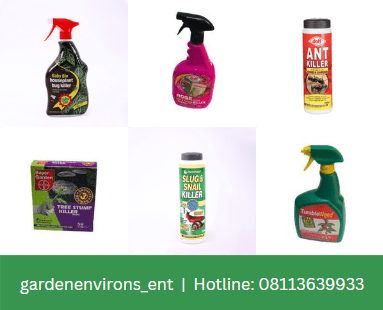Gardening is a rewarding hobby that connects us to nature while providing fresh, homegrown produce. Garden pests, on the other hand, can pose a considerable issue, jeopardizing your plants’ health and output. Using pest control solutions correctly will help you maintain a healthy garden. This guide will take you through the processes for using these products safely and effectively.
Understanding Common Garden Pests
Before getting started with pest control, you need to first identify the most frequent pests in your garden. Some popular ones include:
- Aphids: are little, sap-sucking insects that can damage plants.
- Caterpillars: are butterfly and moth larvae that frequently eat plants.
- Slugs and snails: are mollusks that eat plant leaves and stems.
- Spider mites: are tiny arachnids that induce the yellowing of leaves.
Identifying the specific pests will help you choose the right control methods.
Choosing the Right Pest Control Products
There are numerous pest control treatments available, each tailored to different pests and garden types. Here are a few categories:
- Insecticidal soaps: are effective against soft-bodied insects such as aphids and spider mites. These soaps tear down the bugs’ exterior membranes.
- Neem Oil: A natural insecticide that affects the entire insect life cycle (egg, larva, and adult).
- Diatomaceous earth is a powder derived from fossilized algae that can repel slugs, snails, and other crawling insects.
- Chemical Pesticides: Synthetic chemicals are used to destroy a variety of pests. Because of the potential environmental damage, these should only be used as a last resort.
How to Apply Pest Control Products
Step One: Read the Label
Before using any pest control product, read the label carefully. The label contains crucial information about correct usage, safety measures, and the pests that the product targets.
Step 2: Test in a Small Area
To guarantee that the product does not hurt your plants, try it in a small, inconspicuous area first. Wait 24 hours to determine if there are any side effects.
Step 3: Apply in the evening
Many pests are less active during the day; therefore,, using products in the evening lowers the danger of evaporation and phototoxicity. Furthermore, beneficial insects such as bees become less active in the evening.
Step 4: Follow the instructions
Apply the product in accordance with the label instructions. This typically entails diluting the product with water and spraying it directly onto the damaged plants. Ensure consistent coverage without oversaturating the plants.
Step 5: Repeat as necessary
Pest management is seldom a one-time task. Reapply the product as directed, especially after rain or watering, to keep it effective.
Safety Tips for Using Pest Control Products
- Wear protective gear, such as gloves, masks, and long-sleeved clothing, to avoid potential chemical exposure.
- Keep pets and children away. Pets and children should not come into contact with treated areas until they are dry.
- Pest control products should be stored in their original containers, out of reach of children and pets.
- Dispose of Containers Properly To avoid environmental contamination, follow local restrictions when disposing of empty containers.
Alternative Pest Control Methods
While products are beneficial, including alternate ways can produce a balanced approach:
- Companion Planting: Planting herbs and flowers, such as marigolds and basil, can naturally repel pests.
- Beneficial Insects: Introduce predators such as ladybugs and lacewings to your garden to keep pest numbers under control.
- Physical barriers, such as row covers, nets, and collars, can help protect plants from pests.
Conclusion
When using pest control chemicals in your garden, you must exercise caution and responsibility. Understanding the pests you’re dealing with, selecting the right products, and applying them effectively can allow you to protect your garden while reducing environmental impact. Combine these tactics with other pest control strategies to ensure a healthy, thriving garden.
Continue to check our blog for the newest gardening ideas and pest control solutions. Happy gardening!

